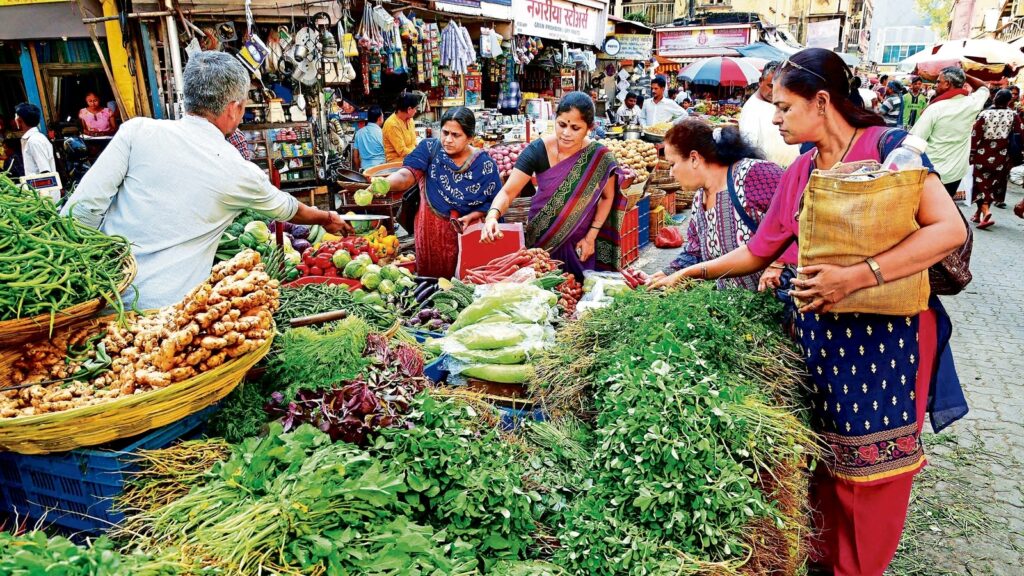
The Consumer Price Index (CPI), India’s benchmark retail inflation measure, will be released by the National Statistical Office (NSO) on Monday. According to a Reuters poll of economists, CPI is expected to rise 6.58 percent year over year in June. If true, this will be the highest rate of inflation since November 2020, when it was 6.9%. This will be the second consecutive month in which retail inflation exceeds the upper limit of the Reserve Bank of India’s 6 percent tolerance band. Here are five graphs to help you understand the latest inflation figures.
1. What is happening to core and non-core inflation?
Fuel prices have dominated the price debate in recent years, and with good reason. On July 7, gasoline prices in all four major cities surpassed $100 per litre. The headline inflation rate, on the other hand, is indicative of much more than just fuel prices. In fact, the CPI basket’s fuel and light category has a weight of only 6.84 percent. Given the higher volatility of food and fuel prices, economists frequently use the distinction of core and non-core inflation when analysing prices. The non-food, non-fuel component of the inflation basket is referred to as core inflation. The weights of core and non-core categories in India’s CPI basket are 54.1 and 45.9, respectively. A sharp increase in non-core inflation has often been the catalyst for inflationary spikes in India. In May 2021, both core and non-core inflation increased when compared to April 2021 levels. In May, core inflation was 6.5 percent, with the non-core component at 6%. While a rise in non-core inflation is to be expected due to the increase in fuel prices, a rise in core inflation will highlight the economy’s broad-based inflationary pressures.
2. The other oil which is driving India’s food inflation
The sharp increase in food inflation from 2% in April 2021 to 5% in May was one of the most striking aspects of the May inflation figures. It’s important to remember that these figures are based on a large sample size. In May 2020, food inflation was 9.2 percent. However, the factors that drive food inflation have changed between May 2020 and May 2021. Cereals, milk and products, and vegetables, the three most important sub-components of the CPI food basket, contributed less in May 2021 than in May 2020. However, edible oil’s role in fueling food inflation has grown significantly. Given that India is a net importer of edible oils and that international edible oil prices are at all-time highs, immediate relief is unlikely. To be sure, global edible oil inflation appears to have peaked in May 2021. Heavy rain in some parts of the country in June, on the other hand, could contribute to a spike in vegetable prices, providing additional tailwinds for food inflation.
3. Services inflation could increase as the economy unlocks and demand picks up
In the CPI basket, the miscellaneous category has a weight of 28.3 percent. This includes the sub-categories of household goods and services, health, transportation and communication, recreation and amusement, education, stationery, and other items, as well as personal care and effects. In May 2021, inflation in the miscellaneous category reached 7.5 percent, the highest level since March 2013. There could be additional inflationary pressures in the future as the economy unlocks and demand for these categories picks up.
4. The role of global commodity prices
Retail inflation is also influenced by changes in producer prices, which are better captured by the Wholesale Price Index (WPI). Later this week, the WPI will be released. In May 2021, it surpassed 10% for the first time, reaching 12.94 percent.
The sharp increase in WPI is also a result of rising commodity prices on the international market, as demand picks up as advanced countries’ economies recover. The Bloomberg Commodity Index (BCOM), on the other hand, shows that international prices peaked in June. On June 10, 2021, the BCOM, a weighted index of energy, grain, industrial metal, precious metal, livestock, sugar, coffee, and cotton prices, hit a high of 95.02, the highest since July 23, 2015. On July 9, it was worth 93.06. The question is whether prices will remain at current levels, which are relatively high by historical standards, or whether they will fall further. A stickiness or reversal in the declining trend in the last week could add to the domestic inflation numbers’ headwinds.




